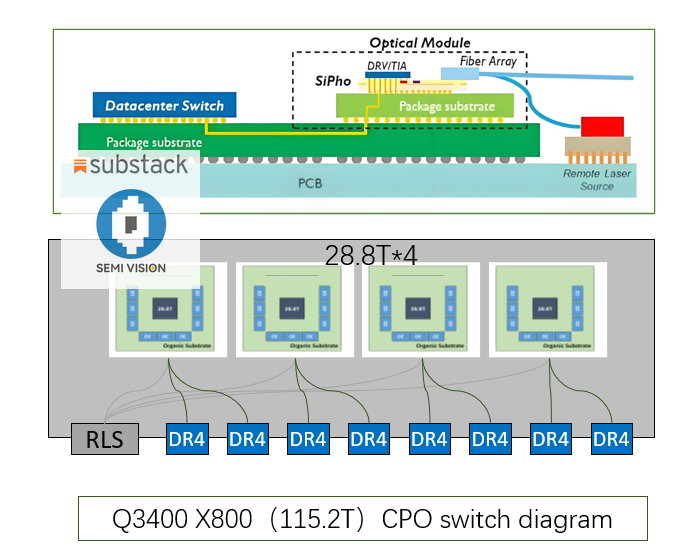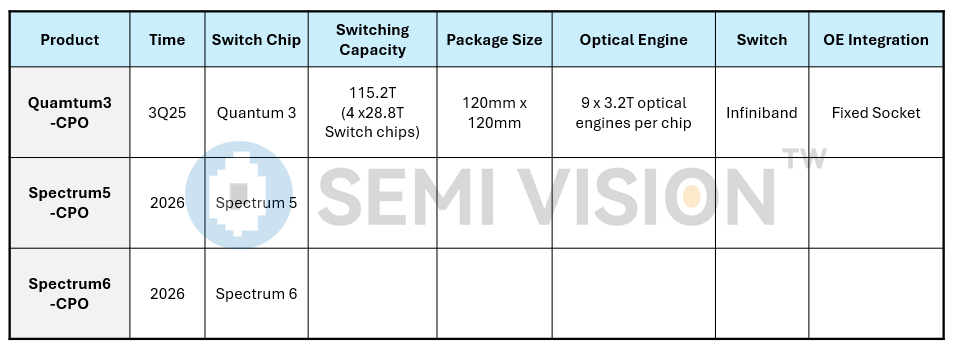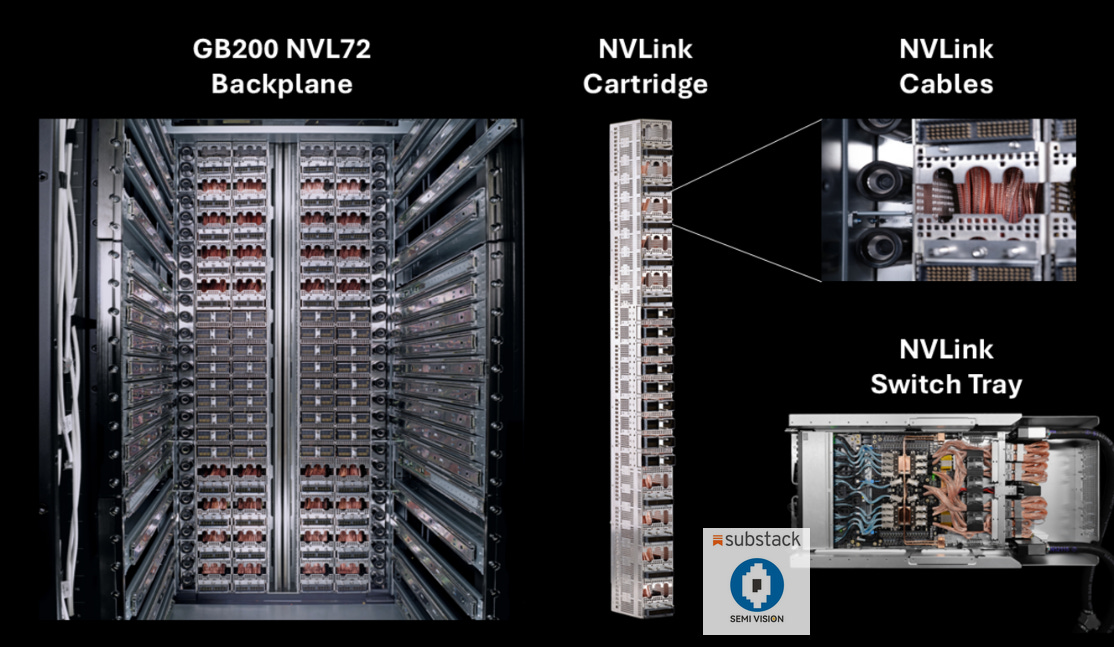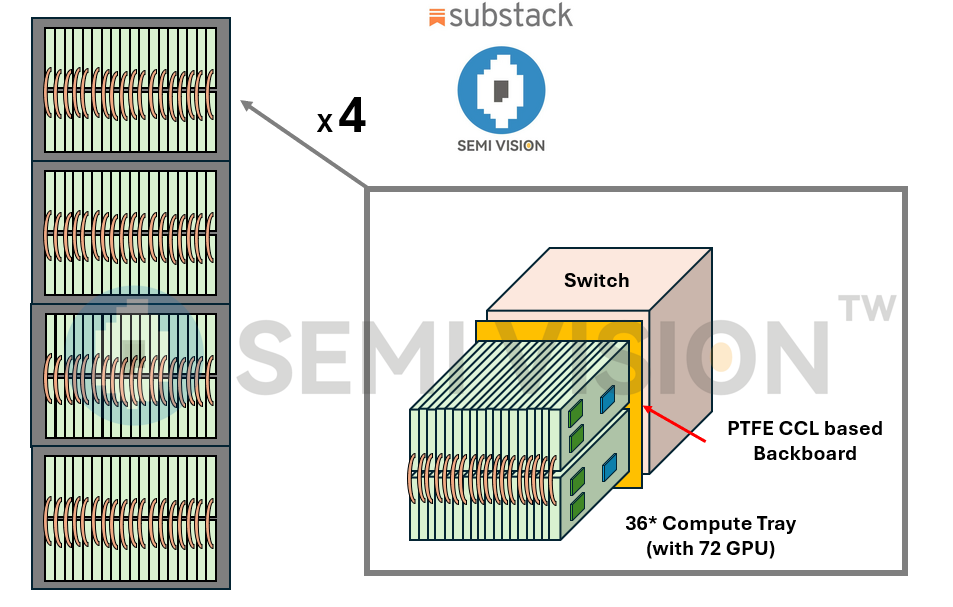Nvidia GTC AI Conference Preview: GB300, CPO switches, and NVL288
Original Article by SemiVision Research
The GTC Conference is set to return to San Jose from March 17 to 21, 2025, bringing together thousands of developers, innovation leaders, and business executives. Attendees will explore how AI and accelerated computing are helping humanity tackle its most complex challenges.
NVIDIA CEO Jensen Huang's GTC Keynote
NVIDIA CEO Jensen Huang will deliver a keynote at GTC, addressing key topics such as:
AI agents
Robotics technology
The future of accelerated computing
His presentation is expected to provide insights into the evolution of AI, robotics, and next-generation computing advancements.
As speculation grows about what NVIDIA will unveil at the 2025 GTC, expectations are high for the announcement of GB300, CPO switches, and NVL288.
GB300 Overview
The B300 GPU is expected to deliver 50% more FLOPS than its predecessor, B200. Key specifications include:
CX8 with 2× network bandwidth
CPO-version switch
GPU SXM module
Full liquid cooling, featuring enhanced cold plate modules and NVQD
Increased power shelf capacity from 66kW to 90kW
NVIDIA’s Chip Development Roadmap
NVIDIA’s chip architecture is evolving along three major platforms:
Hopper Platform (Current)
Blackwell Platform (Current)
Future Rubin Platform (Upcoming)
The development cycle follows an annual cadence, adapting to data center scalability and technical constraints, requiring a new architecture each year.
NVIDIA's Rubin series marks a significant shift, as most of its chip designs will transition to the 3nm process. This move aligns with next-generation AI and HPC demands, improving power efficiency, performance, and scalability.
Key Takeaways:
Rubin chips will fully adopt 3nm process technology
Higher transistor density for improved AI workload efficiency
Better power efficiency, crucial for large-scale data centers
Alignment with NVIDIA’s roadmap for annual architectural upgrades
According to Semivision’s analysis, the following chart summarizes NVIDIA’s Rubin chip design transition to 3nm:
We process and generate a table or chart based on this information for better visualization.
Nvidia Chip Design Roadmap
Scale-Out and the Importance of CPO Technology in AI Clusters
As AI clusters continue to expand, Scale-Out plays a crucial role in overcoming bandwidth limitations. To push the boundaries of data transfer efficiency, technological advancements become essential. This is where Silicon Photonics comes into play, driving discussions around Co-Packaged Optics (CPO) technology.
What is CPO Technology?
CPO aims to achieve electro-optical integration through advanced packaging techniques. This approach integrates optical components directly within the switch package, significantly reducing power consumption, latency, and bandwidth constraints.
Nvidia's CPO Product Lineup
Nvidia's CPO product portfolio includes IB (InfiniBand) and Spectrum switches, featuring the following key models:
Quantum 3400 X800 InfiniBand Switch
Spectrum 5 X800 Ethernet Switch
Spectrum 6 X800 Ethernet Switch
Production Timeline
Quantum 3400 CPO switch → Scheduled for mass production in July 2025
Spectrum 5 CPO switch → Expected to enter mass production in December 2025
As CPO technology gains traction, it is set to revolutionize AI infrastructure, enabling higher bandwidth, lower power consumption, and more scalable AI clusters.
Quantum 3400 CPO Switch Overview
Total Switching Capacity: 115.2T
Chiplet Design:
4× 28.8T switch chips
Each 28.8T switch chip consists of 6 chiplets
Each chiplet consists of 3 small dies
Each small die has a switching capacity of 1.6T
Final Computation: 1.6T × 3 × 6 = 28.8T per chip
Optical Engine Integration:
9× 3.2T optical engines surrounding the package
Each optical engine connects to fibers via FAU
Each optical engine has 32 optical waveguide channels, each coupled with one fiber
Since current fiber technology uses 100G per fiber, each 3.2T optical engine requires 32 optical waveguides
PCB Architecture:
Each PCB holds 2× 28.8T switch chips
Two PCBs stacked vertically within a switch, achieving a compact form factor
Spectrum 5 & Spectrum 6 CPO Switches
Nvidia’s next-generation Ethernet CPO switches follow a similar chiplet-based design:
Spectrum 5 CPO Switch
Total Switching Capacity: 204.8T
4× 51.2T switch chips
Optical Engine Setup: 16× 3.2T optical engines per chip
Spectrum 6 CPO Switch
Total Switching Capacity: 409.6T
4× 102.4T switch chips
Optical Engine Setup: 16× 6.4T optical engines per chip
Packaging Technology
Both Spectrum 5 and Spectrum 6 CPO switches adopt CoWoS-S packaging
Why is the Package Size Larger for the Infiniband Switch Compared to the Ethernet Switch?
The key reason for the larger package size in Nvidia’s Quantum 3400 InfiniBand switch compared to the Spectrum 5/6 Ethernet switches lies in the evolution of optical engine integration.
Pluggable optical engines reduce repair complexity
Lower maintenance costs and downtime for Spectrum 5/6 switches
Quantum 3400's fixed design was a transitional solution before the pluggable upgrade
As optical interconnect technology matures, hot-swappable optical engines will likely become the standard in future high-performance networking hardware.
Nvidia's CPO Product Lineup
Beyond CPO switches, we expect OIO (Optical I/O) to begin deployment in 2027, aligning with TSMC’s CPO roadmap.
NVL288: In-Rack Connectivity
With the surging demand for inference workloads, we anticipate that Nvidia will introduce additional rack configurations beyond the current NVL72, aiming to enhance performance and spatial efficiency.
We expect the NVL288 configuration to debut alongside the next-generation Rubin architecture, where four NVL72 units will be interconnected via rear-end cables to form a NVL288 rack.
Each NVL72 contains 36 compute trays (equipped with I/O, NVLink interfaces, 1 CPU, and 2 GPUs).
These compute trays are orthogonally interconnected with NVSwitch trays.
Each NVL72 includes 6 NVSwitch trays, ensuring seamless in-rack connectivity.
PTFE CCL Backplane Solution
We anticipate that Nvidia will transition to a PTFE CCL-based backplane solution, replacing the traditional cable tray, which suffers from low yield rates and inefficient maintenance.
PTFE CCL offers:
Ultra-low dielectric loss, ensuring stable high-frequency performance
Minimized energy dissipation, improving overall system efficiency
We expect Nvidia to showcase NVL288 during the GTC conference, highlighting its advancements in rack-scale AI infrastructure.
In the next article, we will delve into Nvidia's CPO supply chain, covering its key suppliers, technology partners, and the manufacturing and packaging ecosystem of CPO.
Related Semi Vision CPO Article:
How to Distinguish Between CPO and OIO? What Is Their Fundamental Difference?
TSMC and NVIDIA Pioneering the Future of AI with Silicon Photonics Technology
Paid Subscribers Area will provide full table of
Nvidia Chip Design Roadmap
Nvidia's CPO Product Lineup















